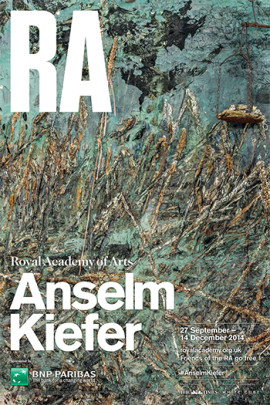Wednesday, December 10, 2014
Expressing modern history: Anselm Kiefer at the RA
This ia a monumental exhibition, by a living German, painting in France, in the most establishment of English art galleries! We are told at the beginning that Anselm was born near Freiburg in 1945, so he lived through the shadow of the crumbling Nazi regime in a corner of the country that was somehow sheltered by France and Switzerland. I found his work resonated with many aspects of contemporary Germany that I know: a deep connection with their land (in his case, the Black Forest and the Rhine River); a curiosity about the art, architecture and cultural legacy of the Nazis; and a respect for the jewish struggle and survival. While we did see his inner rebel in his first few paintings on display, where he portrayed the Nazi salute against a variety of backdrops, it was clear that he is more than a reactionary artist. His paintings are large and extremely textural and they convey big concepts. I liked the way he used sunflowers as a symbol for hope, even though at times they were suspended dead, upside down. He also used ash and splitting clay to represent the barren destruction. He cleverly portrayed the neo-classical architectural style created by Albert Speer during the Nazi regime, to recreate a sense of fear and foreboding; it was accentuated by having all four walls of a gallery hung with large paintings on this theme.
I also appreciated the way he was given freedom to create pieces for the individual galleries of the RA. His piles of gigantic leaden books and discarded canvasses contrast with the way we were drawn along the Rhine river in the last room. My only unanswered question; if this really was a contemporary interpretation of Germany history, where were the Germans in this exnibition?
Subscribe to:
Post Comments (Atom)

No comments:
Post a Comment